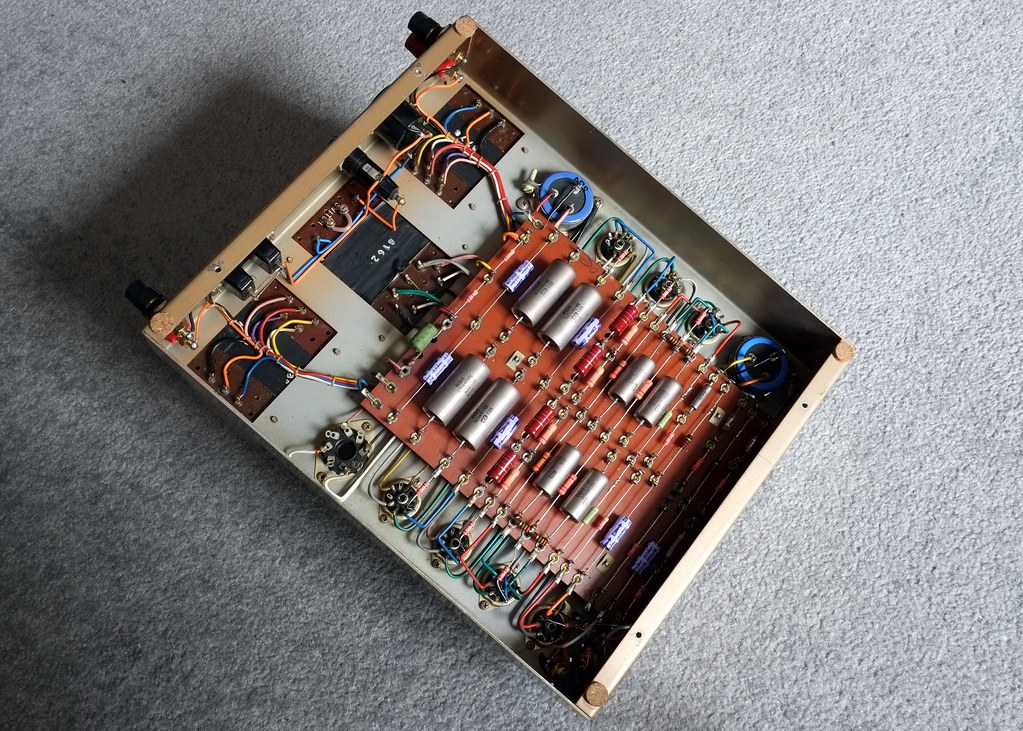George J
Herefordshire member
Dear Disco,
You are very much in the territory of - for example - an unmolested Baroque organ from Bach’s time, compared to a much modernised instrument from the time.
No doubt that Bach’s organ music is best served on an organ in good sympathetically rebuilt [unmodofied] condition from his own time than a much modified sample, but one can never know how closely the a truly old specified organ resembles what Bach would have thought normal. That is never going to happen. It is not possible.
But I had a great surprise to find some recordings made sixrty years apart of of two Schnitke organs [in Cappel and in Holland] recorded by DG and by Quad and you know that the qualities of these two ancient and almost no more than properly serviced for centuries old instruments showed exact similarities of pipe voicing, even in such diverse recordings.
The reality is that good sympathetically serviced classic Leak and Quad sound finer in classical music than anything made since including the arTless modifications to make these old pieces of hifi sound more modern.
The reality remains that hifi has been on a musically downward trend since at least the late 1960s. Before that music was more important than effect, and noawdays effect takes precedence every time. Stereo is an example of this. Stereo is an abomination of the worst kind. If it mattered where the musicians exactly were when giving the performance, by now we would have a standardised layout for orchestras and ensembles, but we don’t. It is a non-issues. And it double the cost of power amplifiers and speakers for a given level of claimed quality.
For Tony L. Forget matching your beautiful TL 12 with another. Simply match it to a single ESL and be happy!
ATB from George
You are very much in the territory of - for example - an unmolested Baroque organ from Bach’s time, compared to a much modernised instrument from the time.
No doubt that Bach’s organ music is best served on an organ in good sympathetically rebuilt [unmodofied] condition from his own time than a much modified sample, but one can never know how closely the a truly old specified organ resembles what Bach would have thought normal. That is never going to happen. It is not possible.
But I had a great surprise to find some recordings made sixrty years apart of of two Schnitke organs [in Cappel and in Holland] recorded by DG and by Quad and you know that the qualities of these two ancient and almost no more than properly serviced for centuries old instruments showed exact similarities of pipe voicing, even in such diverse recordings.
The reality is that good sympathetically serviced classic Leak and Quad sound finer in classical music than anything made since including the arTless modifications to make these old pieces of hifi sound more modern.
The reality remains that hifi has been on a musically downward trend since at least the late 1960s. Before that music was more important than effect, and noawdays effect takes precedence every time. Stereo is an example of this. Stereo is an abomination of the worst kind. If it mattered where the musicians exactly were when giving the performance, by now we would have a standardised layout for orchestras and ensembles, but we don’t. It is a non-issues. And it double the cost of power amplifiers and speakers for a given level of claimed quality.
For Tony L. Forget matching your beautiful TL 12 with another. Simply match it to a single ESL and be happy!
ATB from George


